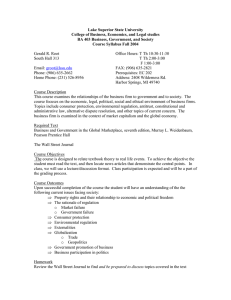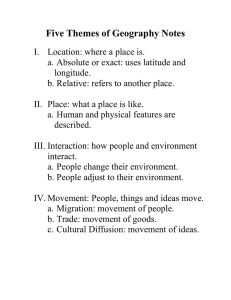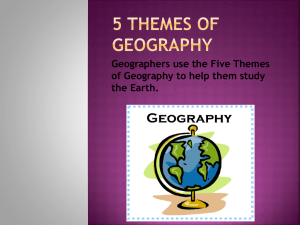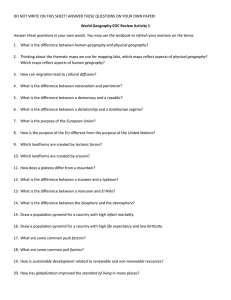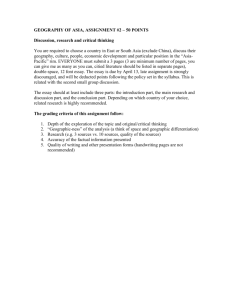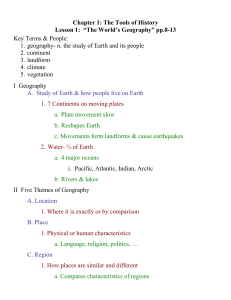Geography of Western Europe and Great Britain Professor Robert Money Phone: 635-2327
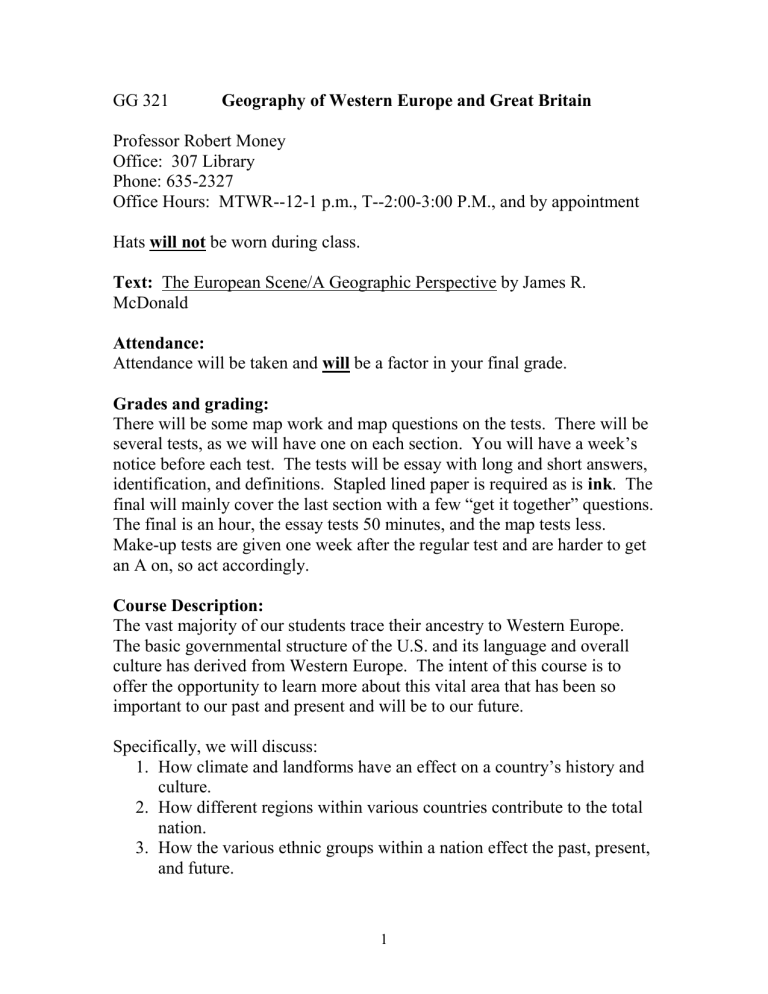
GG 321 Geography of Western Europe and Great Britain
Professor Robert Money
Office: 307 Library
Phone: 635-2327
Office Hours: MTWR--12-1 p.m., T--2:00-3:00 P.M., and by appointment
Hats will not be worn during class.
Text: The European Scene/A Geographic Perspective by James R.
McDonald
Attendance:
Attendance will be taken and will be a factor in your final grade.
Grades and grading:
There will be some map work and map questions on the tests. There will be several tests, as we will have one on each section. You will have a week’s notice before each test. The tests will be essay with long and short answers, identification, and definitions. Stapled lined paper is required as is ink . The final will mainly cover the last section with a few “get it together” questions.
The final is an hour, the essay tests 50 minutes, and the map tests less.
Make-up tests are given one week after the regular test and are harder to get an A on, so act accordingly.
Course Description:
The vast majority of our students trace their ancestry to Western Europe.
The basic governmental structure of the U.S. and its language and overall culture has derived from Western Europe. The intent of this course is to offer the opportunity to learn more about this vital area that has been so important to our past and present and will be to our future.
Specifically, we will discuss:
1.
How climate and landforms have an effect on a country’s history and culture.
2.
How different regions within various countries contribute to the total nation.
3.
How the various ethnic groups within a nation effect the past, present, and future.
1
4.
How religion has played a role in the internal and external history of these nations or regions.
5.
How geography has had an effect on international relations.
6.
How the geography of European Wars has had an effect in the U.S.
7.
The impact of industrialization, imperialism, globalization, recent immigration, and the emerging Third World on Europe and the U.S.
8.
The role and potential of the Common Market and the European
Union—is a United States of Europe possible?
9.
Lastly, we will ponder the future.
Course Standards:
1.
Students will be able to discuss the physical geography of Western
Europe including landforms and basic topography.
2.
Students will understand how climate often affects what and who a nation is.
3.
Students will understand population migrations and settlement patterns and be able to discuss how these have impacted the past and present.
4.
Students will be able to apply the above standards to the Low
Countries, the British Isles, Germany, Austria, and Switzerland,
France, Spain, Portugal, and Italy
5.
Students will be able to discuss the impact of N.A.T.O., the Common
Market, and the European Union.
6.
Students will understand the relations of the above areas with Eastern
Europe, the United States, Canada, and the rest of the world.
7.
Students will be asked to think about the future in light of what they have learned about the past.
Students Accommodations and Support Services : In compliance with lake Superior State University policy and equal access laws, disability-related accommodations or services are available. Students who desire such services are to meet with the professor in a timely manner, preferable the first week of class, to discuss their disability-related needs. Students will not receive services until they register with the
Resource Center for Students with Disabilities (RCSD). Proper registration will enable the RCSD to verify the disability and determine reasonable academic accommodations. RCSD is located in Library 101. The telephone number is (906) 635-2454
2
